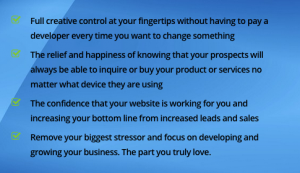5 Ways to Reduce Customer Churn

What Is Customer Churn?
Customer churn, often referred to as customer attrition, is a business term that describes the process when customers stop doing business with a company. It’s a critical metric because it’s often less expensive to retain existing customers than it is to acquire new ones. Churn can occur for a variety of reasons: customers may be dissatisfied with a product or service, they may find a better or cheaper alternative, or they might simply no longer need the product or service. In other cases, churn is a sign of a deeper issue with customer loyalty.
Understanding customer churn is not just about identifying the rate at which customers leave, or predicting customer churn in advance, but also recognizing why they leave. This knowledge can provide valuable insights into the areas of your business that may require improvement. Identifying and addressing these issues can reduce customer churn, enhance customer loyalty, and ultimately increase profitability.
The Importance of Reducing Customer Churn
Reducing customer churn is vital for every business. It’s not just about maintaining a healthy customer base; it’s also about ensuring the financial health and profitability of the business.
Financial Health and Profitability
Acquiring a new customer can cost five times more than retaining an existing one. Moreover, existing customers are likelier to try new products and spend more than new customers. Therefore, a high churn rate can significantly impact a company’s bottom line.
The impact of customer churn on revenue is not just immediate; it also has a long-term effect. When a customer leaves, not only does the company lose that customer’s current revenue, but it also loses all its potential future revenues. Furthermore, the company may have to spend more on marketing and sales efforts to replace the lost customers, further eroding profits.
Predictable Business Growth
Reducing customer churn is also crucial for predictable business growth. A business with a high churn rate is like a leaky bucket; if water keeps leaking out, you’ll never fill the bucket. On the other hand, a business with a low churn rate is like a sturdy container; the more customers you add, the fuller it gets.
A low churn rate allows for more predictable revenue, enabling better planning and forecasting. It provides stability and allows the business to focus on growth strategies rather than constantly trying to plug leaks.
Customer Loyalty and Advocacy
Customer churn is not just about lost sales; it’s also about failed and lost relationships. When customers leave, they take their loyalty and advocacy, which can be far more valuable than their immediate financial contribution. Loyal customers are more likely to refer others to your business, and word-of-mouth referrals are often the most effective form of marketing.
A high churn rate can also harm a company’s reputation. Customers who leave due to dissatisfaction may share their negative experiences with others, deterring potential customers. On the other hand, reducing customer churn helps build a loyal customer base that can act as brand ambassadors, promoting the company’s products or services to its network.
Enhanced Customer Experience
Finally, reducing customer churn is crucial for enhancing the customer experience. When customers churn, it’s often a signal that something is wrong with the customer experience. It might be poor customer service, a lack of perceived value, or a product that doesn’t meet the customer’s needs.
By focusing on reducing churn, businesses can improve the customer experience. They can identify the pain points that drive customers away and find ways to address them. This helps retain existing customers and makes the product or service more attractive to potential customers.
5 Ways to Reduce Customer Churn
Now that we understand what customer churn is and why it’s crucial to reduce it, let’s explore five strategies to help you achieve this.
Enhance Customer Onboarding
A well-structured and efficient onboarding process is the first step towards reducing customer churn. The onboarding stage sets the tone for the entire customer relationship and can significantly impact a customer’s decision to continue using your product or service.
Ensuring customers understand how to use your product or service and quickly gain value from it is key to a successful onboarding process. This can be achieved by offering precise and detailed user guides, instructional videos, or even one-on-one training sessions.
Improve Customer Engagement and Communication
Constant and meaningful engagement with your customers is crucial for retention. Regular communication via emails, newsletters, or social media can help keep your business top of mind for your customers.
However, it’s not just about frequency but also the quality of your communication. Personalized messages, addressing your customers’ specific needs and interests, are far more effective than generic communication.
Invest in Quality Customer Support
High-quality customer support is another vital area in reducing churn. Customers should feel that their concerns and complaints are being heard and addressed promptly and efficiently.
Investing in a skilled customer support team and implementing customer-friendly policies can significantly improve customer satisfaction and loyalty, thereby reducing churn.
Regularly Update and Upgrade Product/Service Offerings
In today’s fast-paced world, businesses must continually evolve to meet their customers’ changing needs and expectations. Regularly updating and upgrading your product or service offerings can keep your customers engaged and reduce their likelihood of seeking alternatives.
This strategy reduces churn and enhances your product’s value proposition, leading to increased customer satisfaction and loyalty.
Implement Predictive Analytics for Early Churn Detection
Lastly, implementing predictive analytics can help detect early signs of customer churn. This involves analyzing data to identify patterns or trends that indicate a customer is at risk of churning.
By detecting these signs early, businesses can proactively address the issue and take steps to improve the customer’s experience, thereby reducing the likelihood of churn.
In conclusion, understanding and addressing customer churn is crucial for any business’s success. By implementing these strategies, businesses can significantly reduce churn, increase customer satisfaction and loyalty, and ultimately boost their bottom line.
Featured Image Credit: freepik.com; Thank you!
The post 5 Ways to Reduce Customer Churn appeared first on ReadWrite.
(4)







